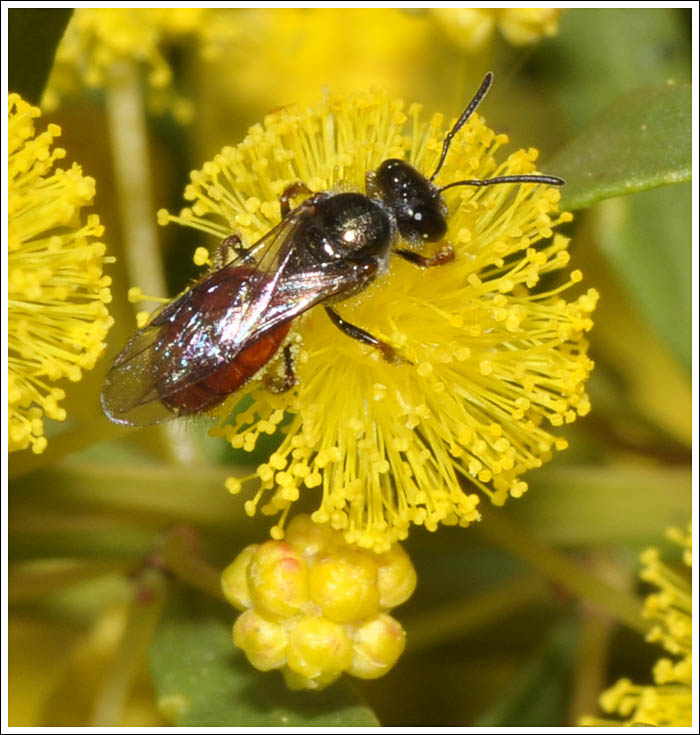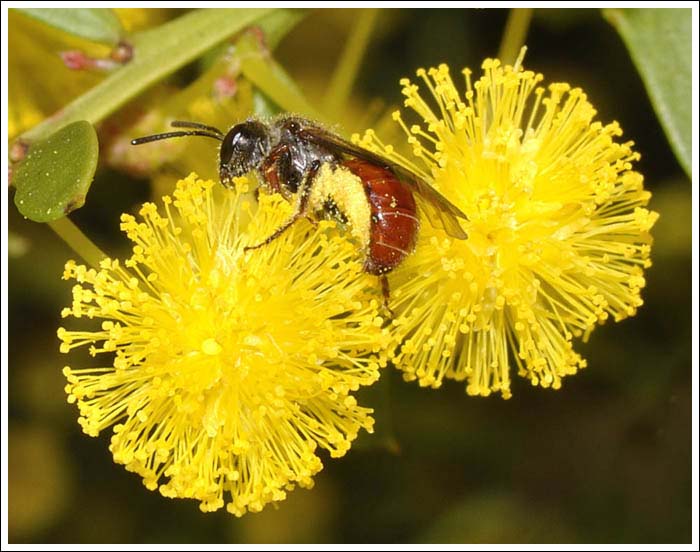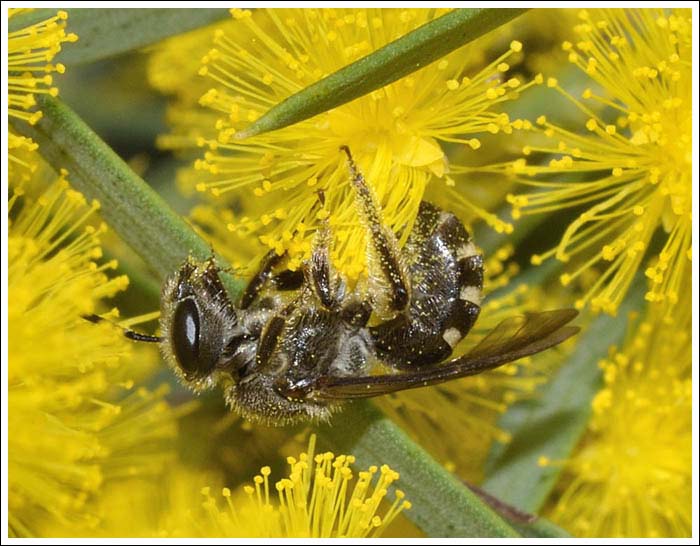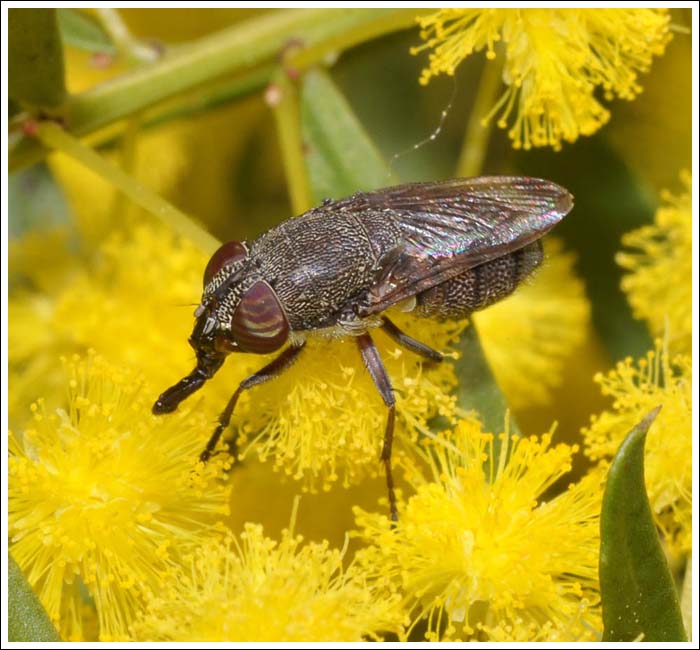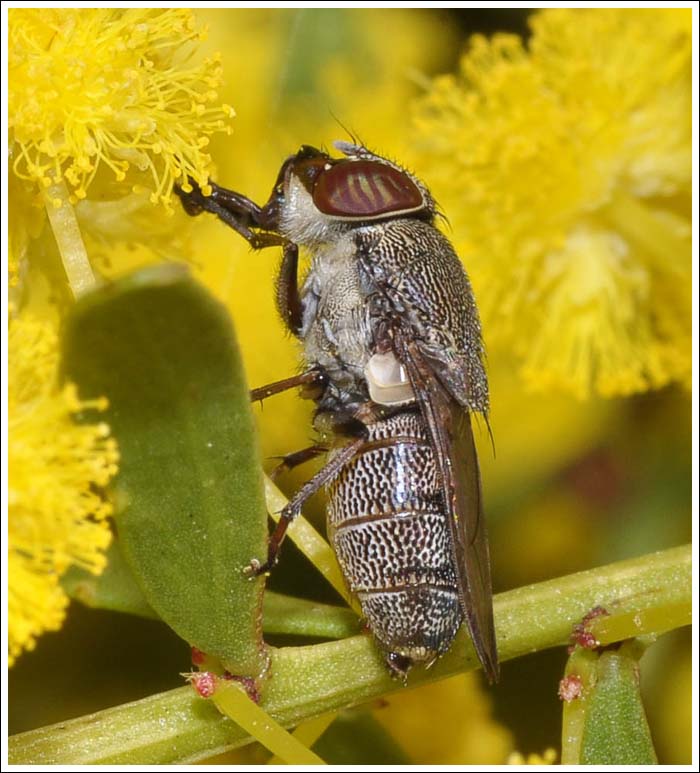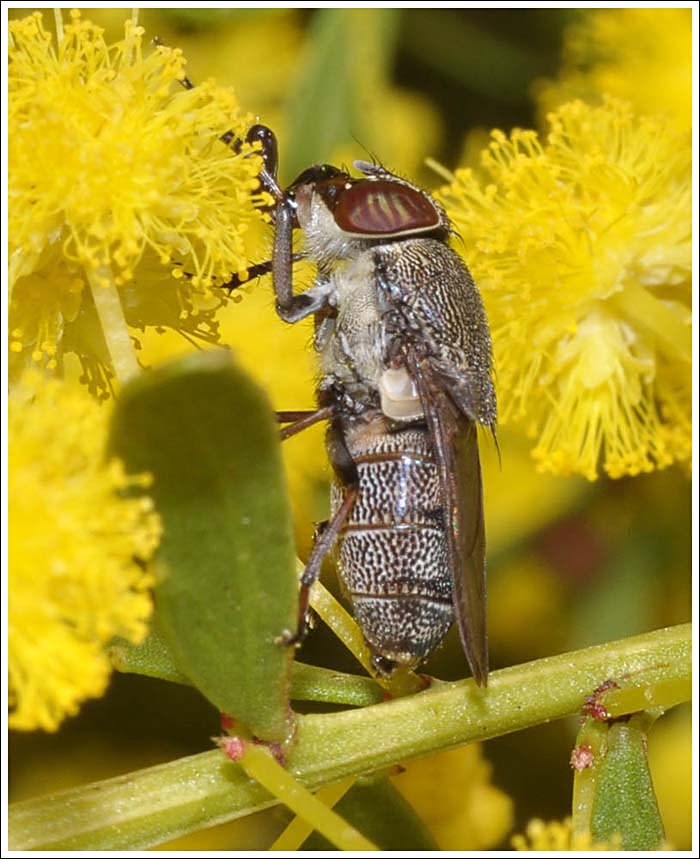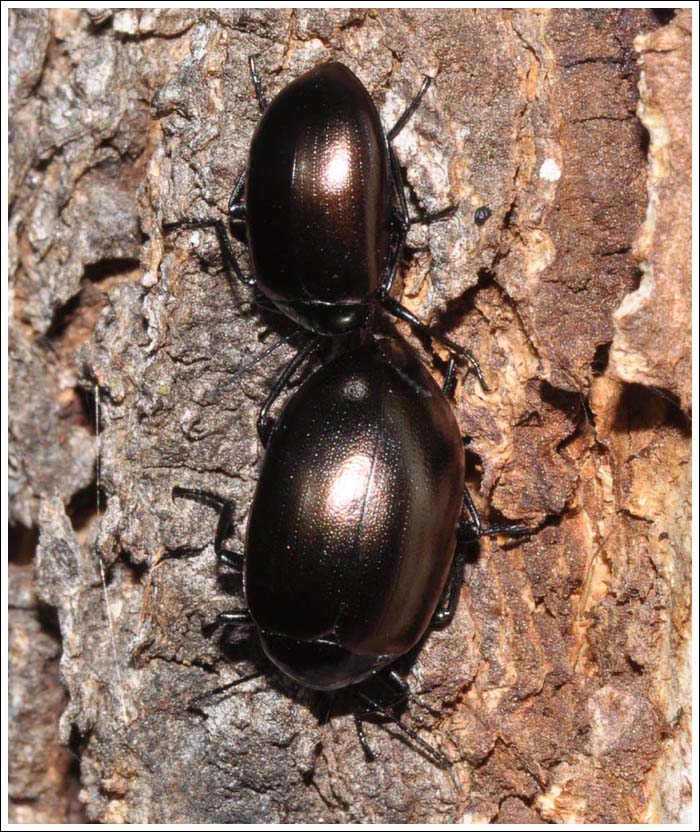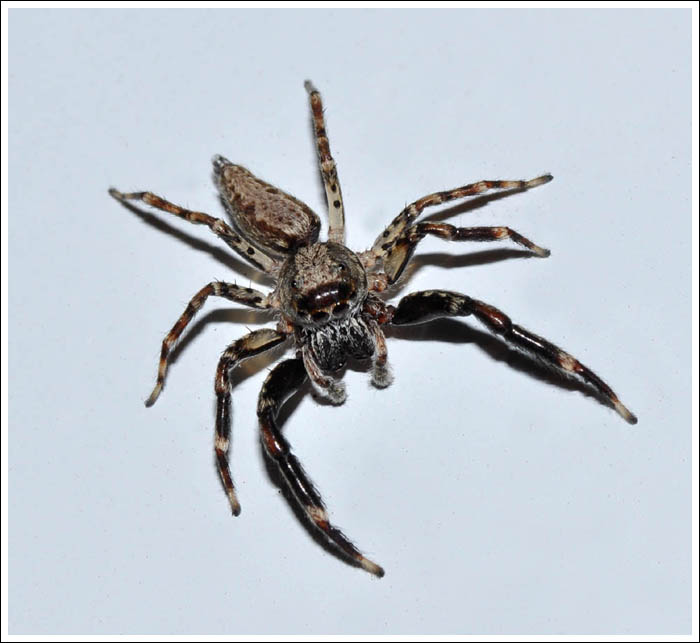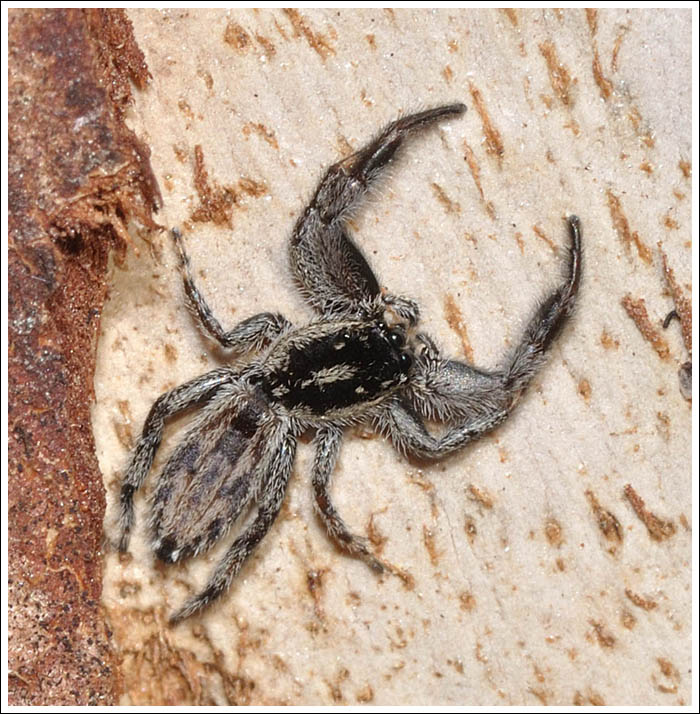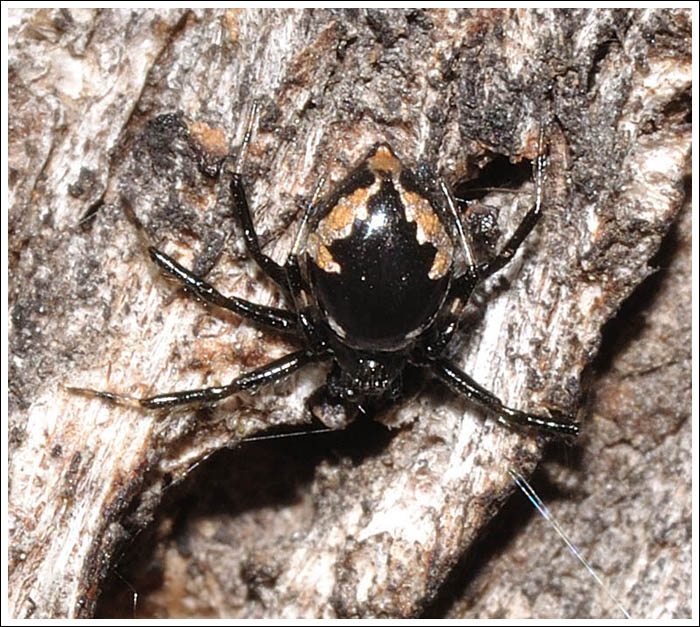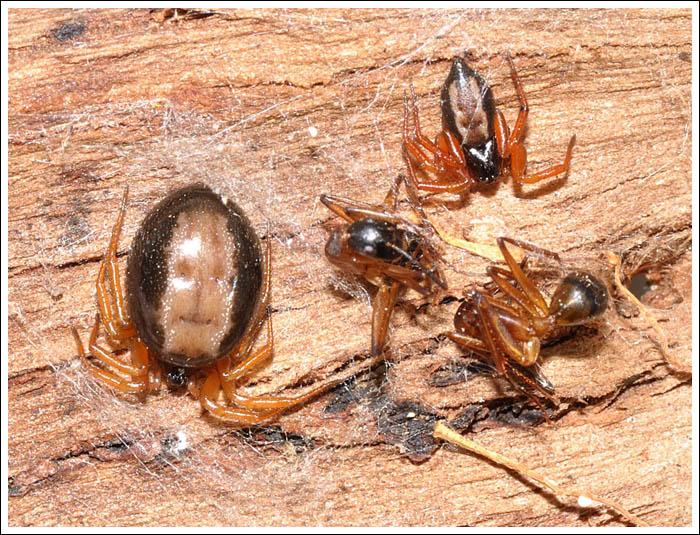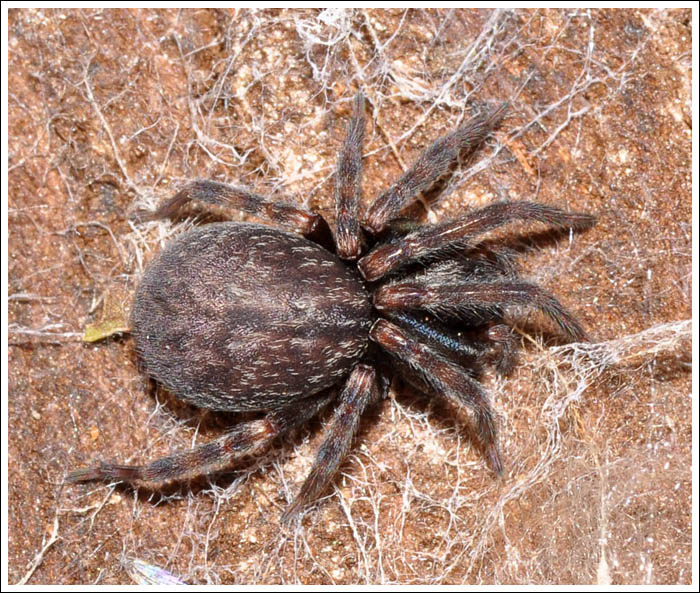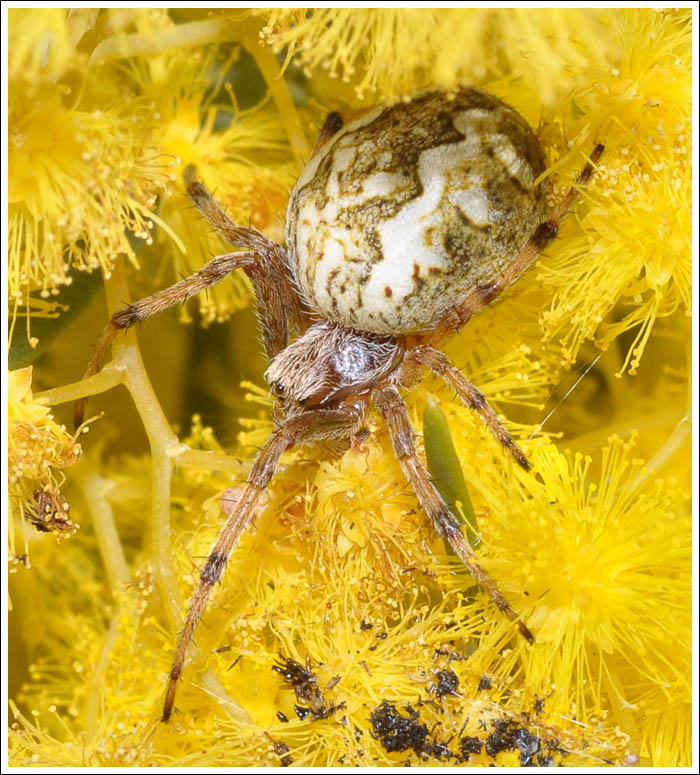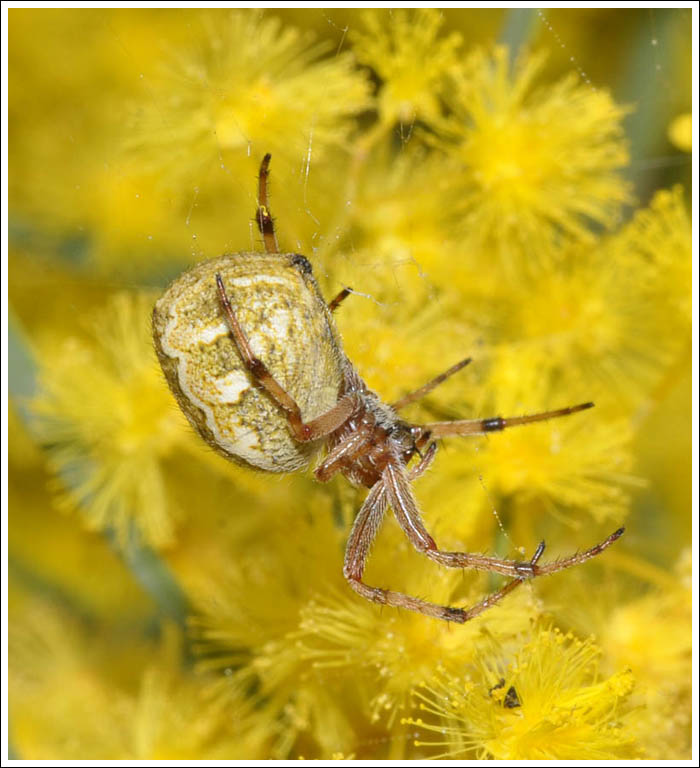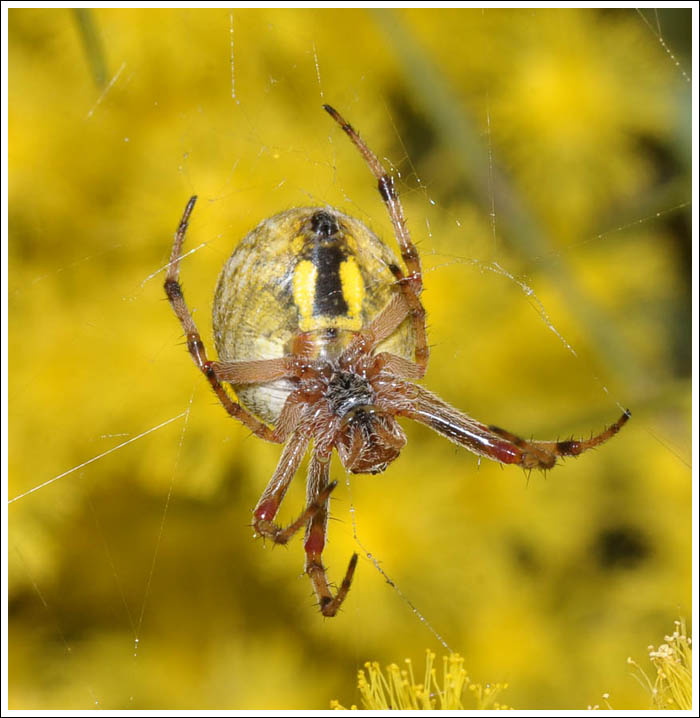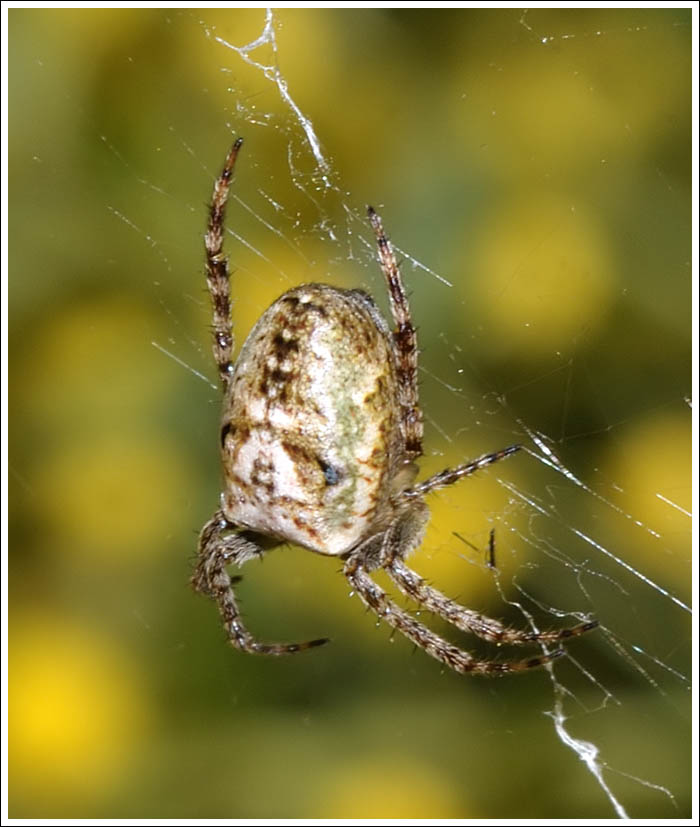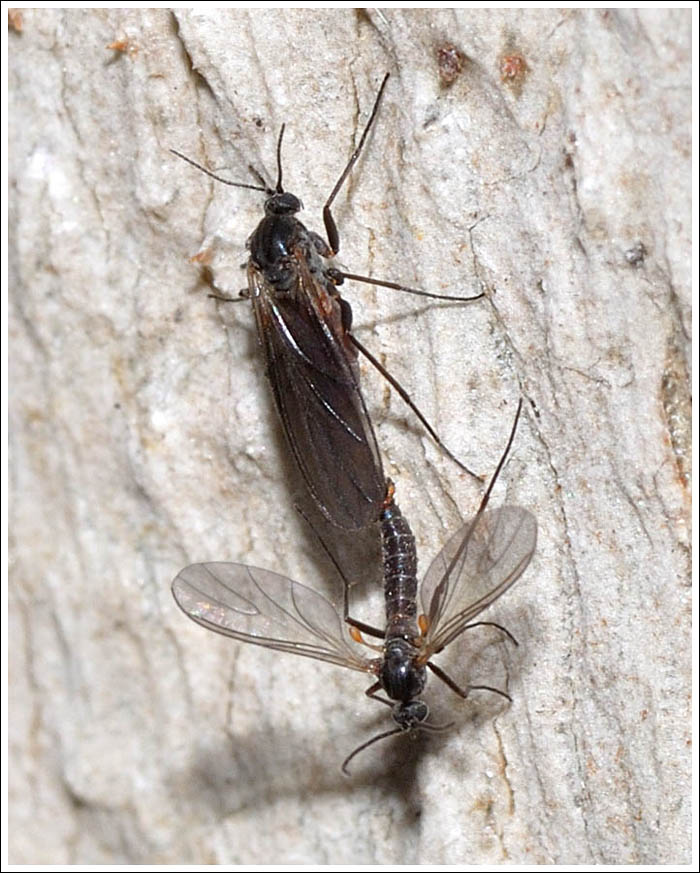Another wattle that is in full flower is the Gold Dust Wattle, Acacia acinacea, and it is very popular with a range of insects. Two species of Lasioglossum bees are busy collecting pollen, Subgenus Homalictus,
and Subgenus Chilalictus.
Hoverflies are common and very numerous, but this solitary fly was much more interesting. It is a member of the Family Rhiniidae, Genus Stomorhina, and is commonly called a nose fly for obvious reasons. It is feeding hungrily on pollen.
Small Velvet Ants have been sighted walking up the red gums occasionally, and finally snapped. They are in the Family Mutillidae, Tribe Dasymutillini.
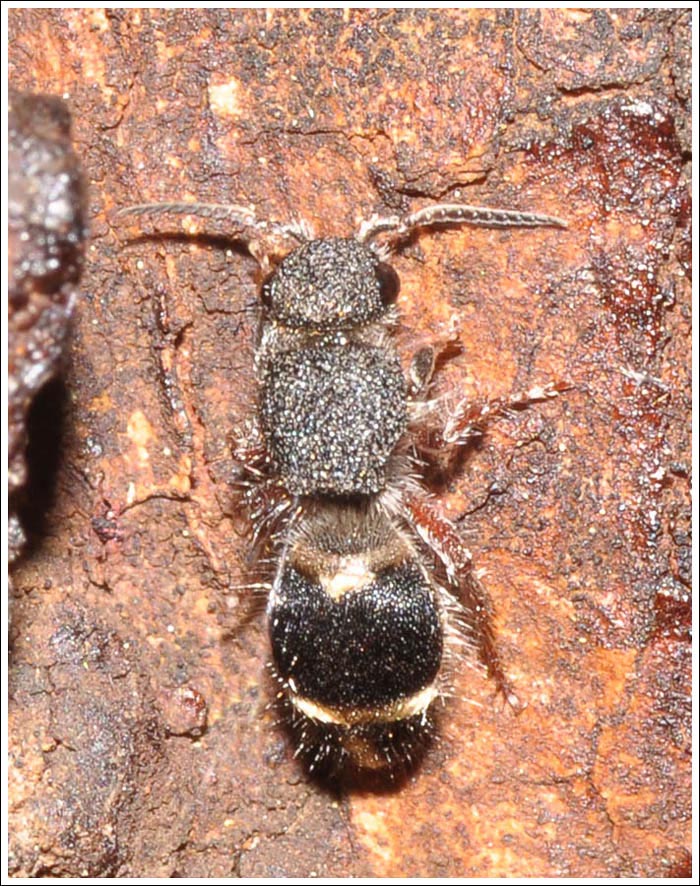
Also on the red gums and quite numerous are these Darkling Beetles, Genus Amarygmus.
And with the warmer weather, more jumpers are starting to appear, this Helpis minitibunda was wandering around on the car bonnet. The specific name means threatening, and is quite apt, as when the camera approaches too closely they will often rear up into a threatening pose, quite unafraid and ready for a rumble.
Click to enlarge.

